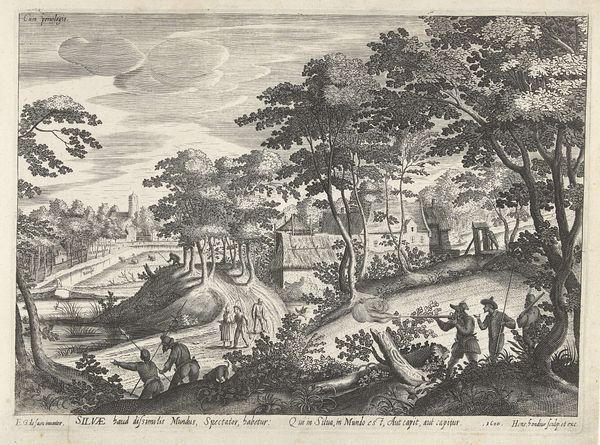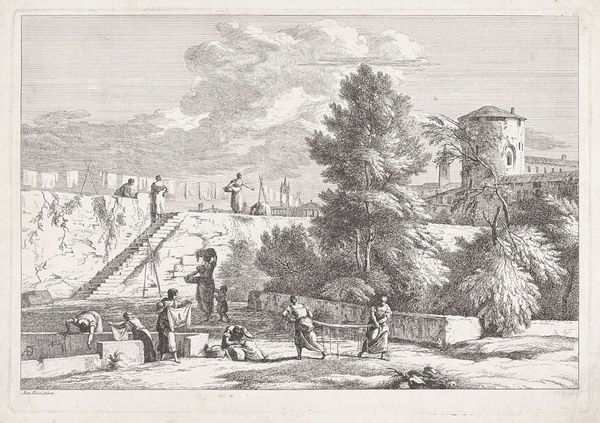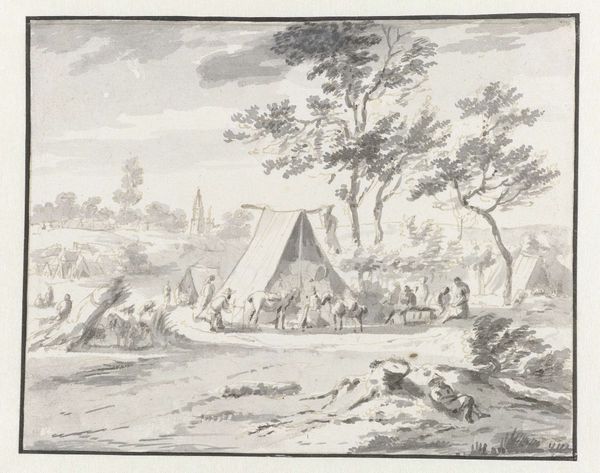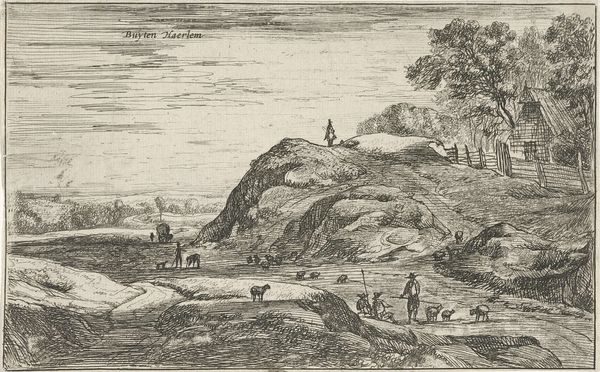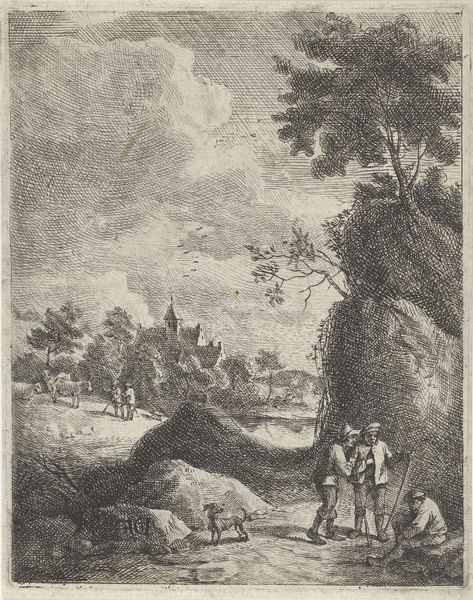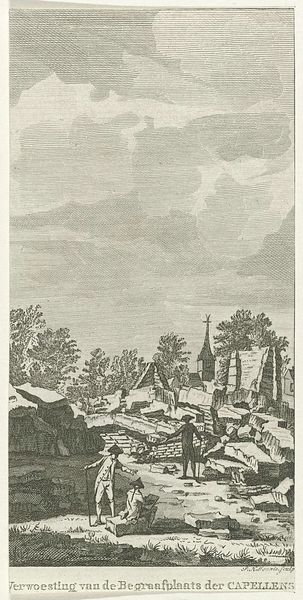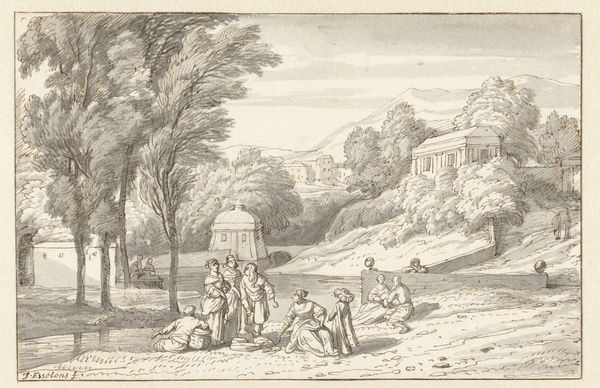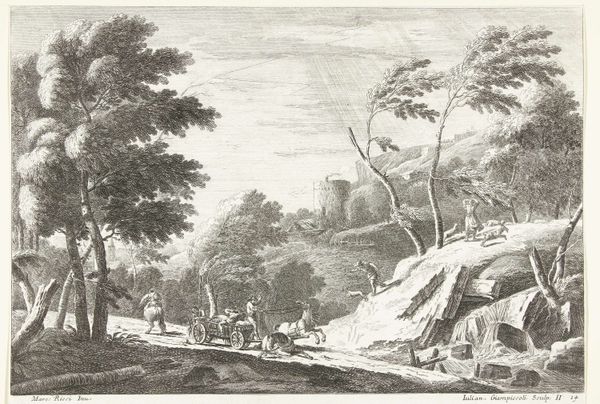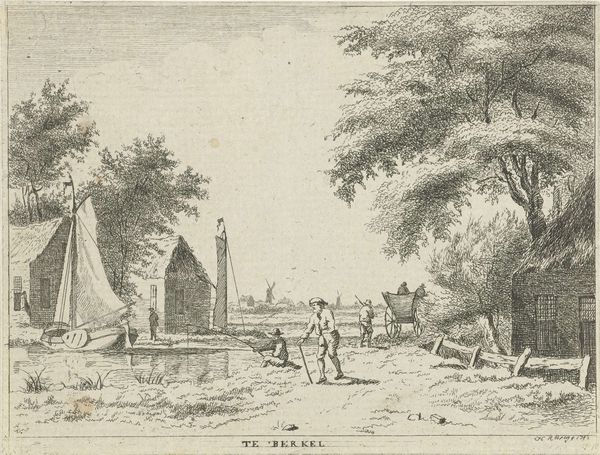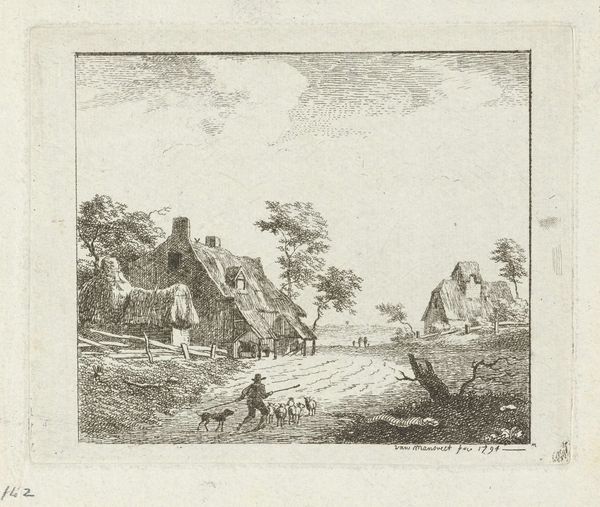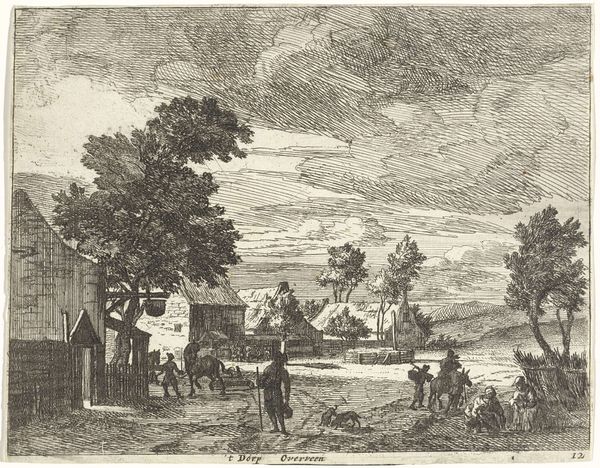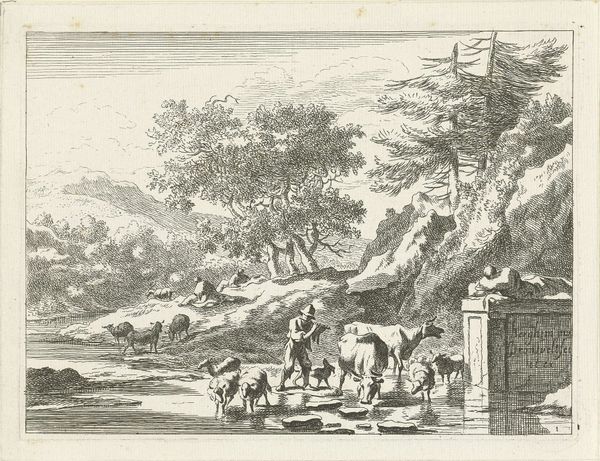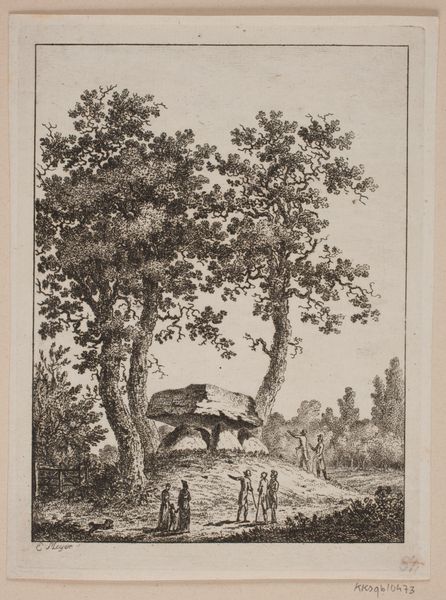
print, engraving
# print
#
landscape
#
engraving
Dimensions: height 296 mm, width 174 mm
Copyright: Rijks Museum: Open Domain
This engraving by Jan Caspar Philips, likely created in the 18th century, depicts the Khoikhoi people seemingly venerating an insect. This act, seen through the lens of the Enlightenment, highlights the fascination with—and perhaps misinterpretation of—foreign cultures. The insect itself, though small, becomes a powerful symbol. Across cultures, insects have been seen as omens, deities, or symbols of transformation. Consider the scarab beetle in ancient Egypt, revered for its connection to the sun god Ra and rebirth. Here, the Khoikhoi’s supposed veneration might reflect anxieties about the unknown, a projection of European beliefs onto an unfamiliar people. What rituals or natural phenomena might have been misunderstood? The power of the insect lies not in its literal form, but in its capacity to engage our collective memory and subconscious fears about the "other." It’s a potent reminder that cultural symbols are fluid, their meanings shaped by historical context and the observer's own biases.
Comments
No comments
Be the first to comment and join the conversation on the ultimate creative platform.

